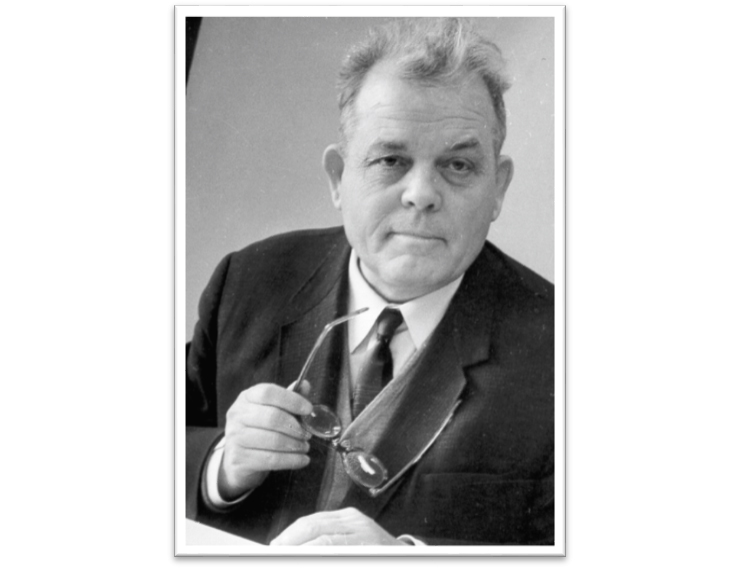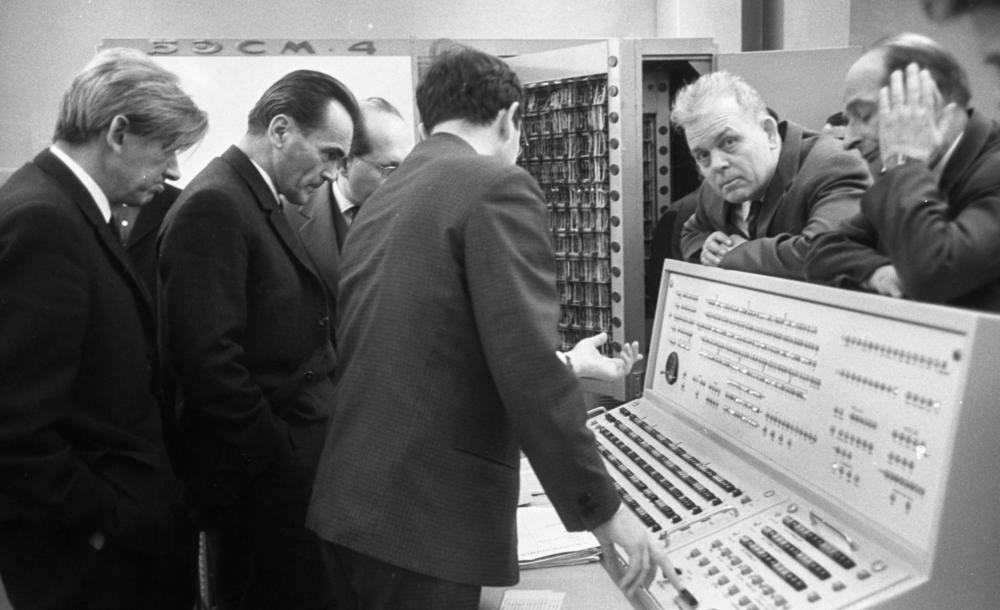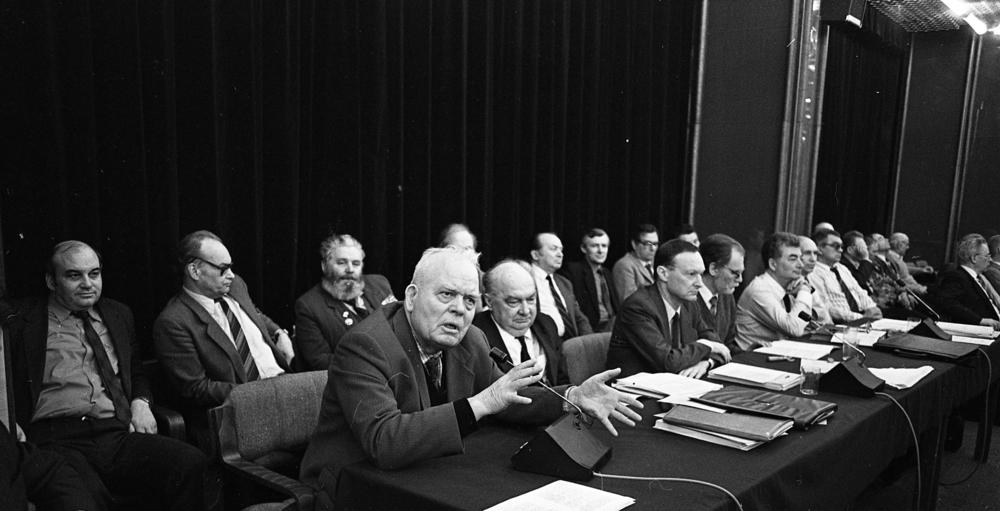Recalling founders: Mikhail Meshcheryakov
News, 17 September 2022
On 17 September, the Joint Institute for Nuclear Research recalls Mikhail Grigorievich Meshcheryakov (1910 – 1994), an outstanding experimental physicist and a talented science organizer, a laureate of USSR state prizes, Corresponding Member of the USSR Academy of Sciences, the founder and the first Director of the research centre in Dubna. He may be considered as a founder of the city of Dubna itself.
Meshcheryakov came from a Cossak family, who lived in Sambek village of Taganrog county. In 1931, the young man entered the Faculty of Physics of Leningrad State University, from which he graduated with honours in 1936. After that, the future scientist began working at the Radium University of the USSR Academy of Sciences (RIAN) under the scientific supervision of Igor Vasilievich Kurchatov who involved the talented postgraduate student to work on the USSR Atomic Project. In 1946 – 1947, Meshcheryakov was a USSR observer during the tests of US atomic bombs on Bikini Atoll, and then was an expert of the UN Atomic Commission.
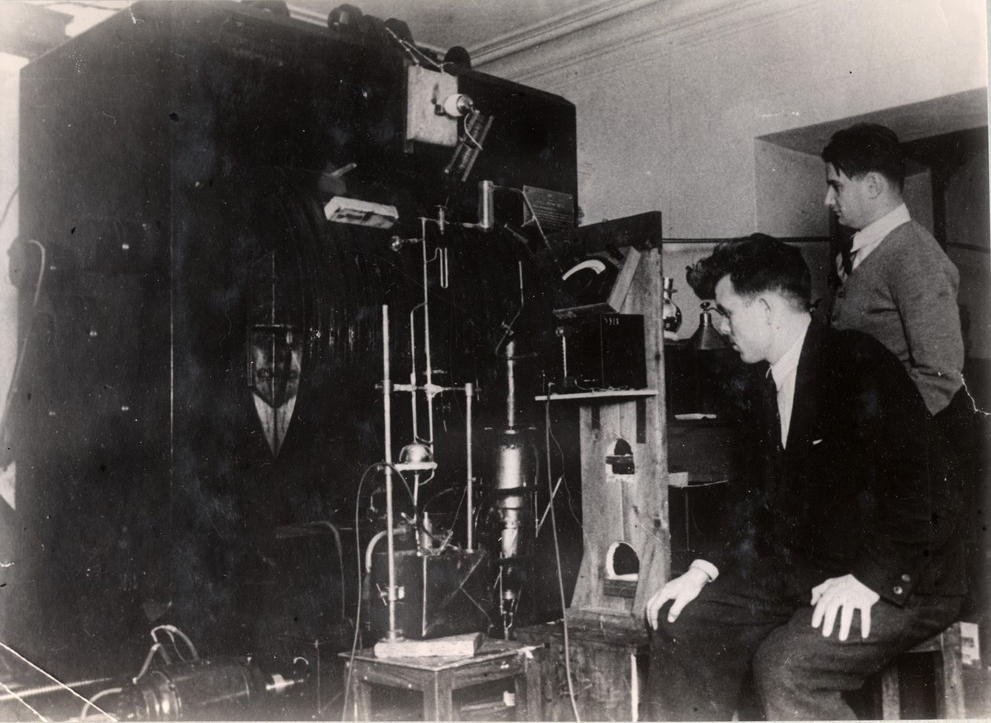 M. G. Meshcheryakov with I. V. Kurchatov
M. G. Meshcheryakov with I. V. Kurchatov
In the years of the Great Patriotic War, Meshcheryakov volunteered for the front, was wounded, and worked in RIAN in evacuation after that.
The strong-willed character of MG, as he was called behind his back, the ability to achieve results in a short time and demand it from others, outstanding organizational skills were noticed by the Soviet government. It elected him to be the Head of the construction of a scientific centre near the village of Bolshaya Volga. Arriving at the site of the future Dubna in 1947, Mikhail Grigorievich together with D. V. Efremov and A. L. Mints supervised the construction of the first Soviet 680 MeV Synchrocyclotron, which was launched completely in December 1949. Until 1953, the Synchrocyclotron remained the largest proton accelerator in the world.
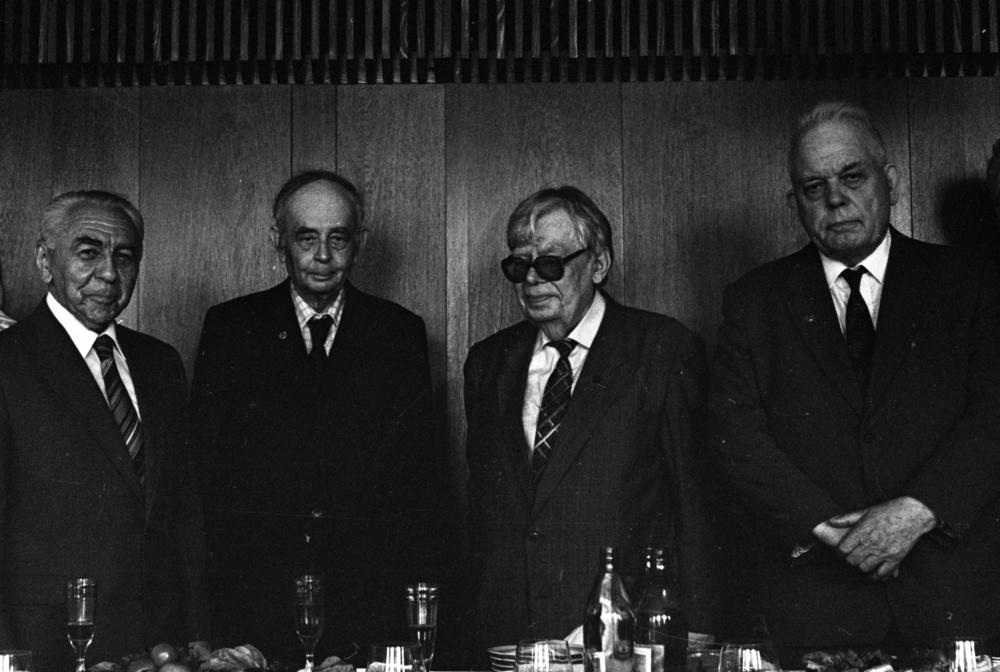 In the photo from left to right: V. P. Dzhelepov, I. M. Frank, N. N. Bogoliubov, M. G. Meshcheryakov
In the photo from left to right: V. P. Dzhelepov, I. M. Frank, N. N. Bogoliubov, M. G. Meshcheryakov
Alexander Rastorguev, an employee of the JINR Museum of History of Science and Technology, wrote in the essay “M. G. Meshcheryakov and his time”, “MG (at that time) deals with everything since he is Scientific Leader, an administrator, and an economic executive. The entire infrastructure of the rapidly growing physicist village is based on him: a heating plant, shops, artesian wells.”
Mikhail Grigoryevich was appointed Director of the Hydroengineering Laboratory of the USSR AS, at which the accelerator was built. Thanks to the rapid development of experimental research on the Synchrocyclotron and significant scientific results, in 1953, the Hydroengineering Laboratory was transformed into the Institute of Nuclear Problems of the USSR AS, which became part of the Joint Institute for Nuclear Research established in 1956. In 1966, together with Nikolay Govorun he was tasked to organise the Laboratory of Computing Techniques and Automation (currently MLIT JINR) at the Institute, which he enthusiastically created and directed until 1988, and was its Honorary Director until 1994.
The main scientific works of Mikhail Grigoryevich were in the fields of accelerators, nuclear physics, and elementary particles. The research that he conducted allowed detecting the resonance effects in nucleon-nucleon interactions and establishing the dependency of π-meson spectra on the size of irradiated nuclei. A number of scientific papers deal with the problem of automation of physical research.
According to memories of the DLNP JINR V. P. Dzhelepov, it was interesting to talk with Meshcheryakov and discuss acute topics, including the current state of science in the country and its future fate. He thought broadly and deeply, “All of us who had the fate to work together with Mikhail Grigorievich on solving major problems were undoubtedly enriched by the remarkable qualities that he possessed as a prominent scientist and science organizer. But at the same time, we have always seen him as a highly educated, interesting person who was fond of history, literature, art in the broad sense of the word. A man who possessed the rare qualities of an artistic storyteller,” he wrote.
